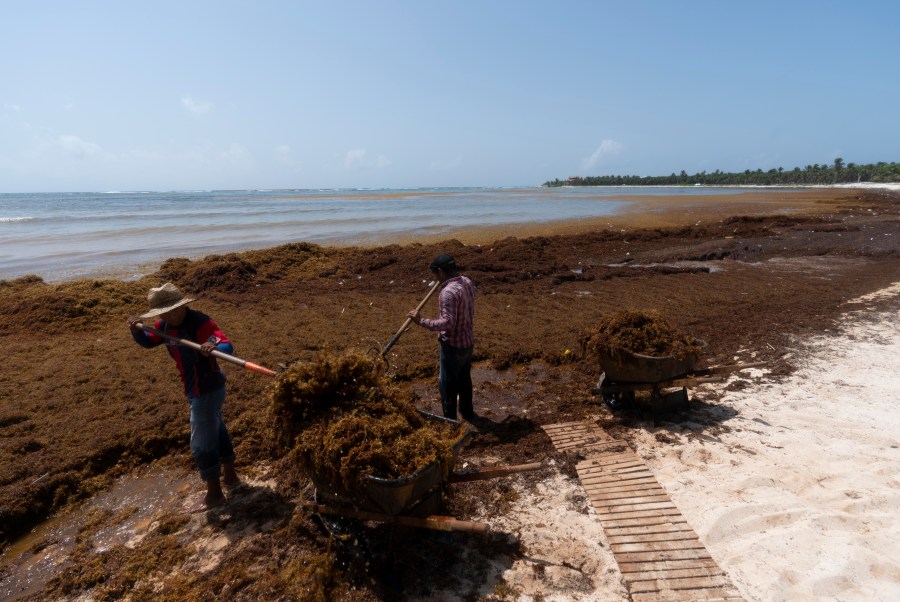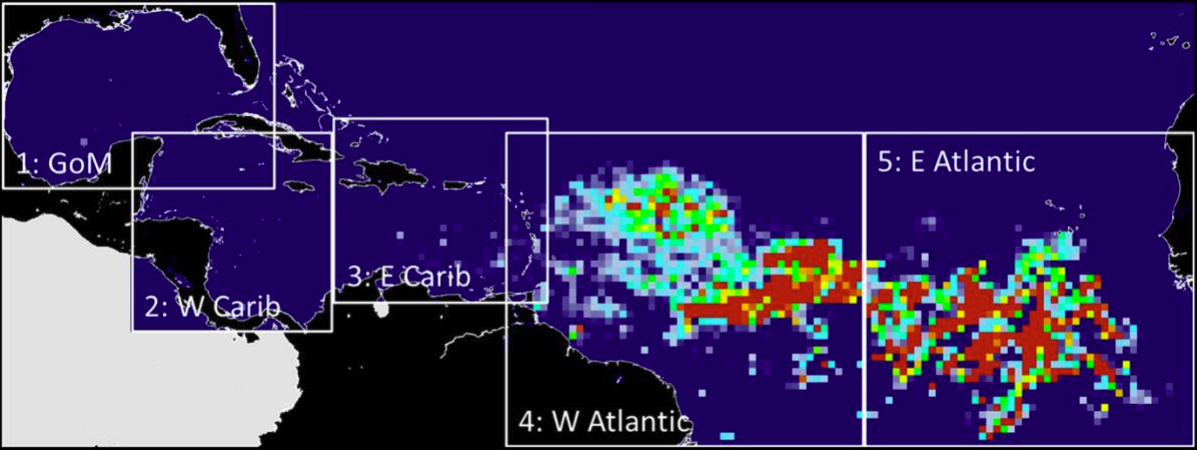Will swaths of stinky seaweed invade beaches before spring break?
(NEXSTAR) – As the spring break travel season nears, a threat to serene beach vacations lurks in the ocean: 9 million metric tons of sargassum seaweed.
That’s a huge increase from last month, when 5.5 million tons of sargassum were recorded. In years past, the seaweed has caused major disruptions to popular tourist spots as it washes ashore. When sargassum starts to dry out on the sand, it rots and emits hydrogen sulfide.
Not only does it smell like rotten eggs, it can also cause breathing problems for people with sensitivities. Little creatures that live in the seaweed clumps can also cause rashes and blisters for workers who are tasked with cleaning up beaches.

With a near-record mass of sargassum recorded over the past month, is history set to repeat itself this spring break?
The scientists at the University of South Florida Optical Oceanography Lab have some good news: the vast majority of the seaweed is still swirling out in the Atlantic. Nearly all the growth in sargassum last month happened out ther, rather than in the Gulf of Mexico or the Caribbean Sea.
Small amounts of sargassum have started to wash up on the Lesser Antilles islands in the Caribbean, which include Antigua, Barbados, St. Lucia and more. “The southeast coast of Florida (including the Florida Keys), however, will be largely free of Sargassum until at least late April or May,” the USF researchers said.

At the beginning of March, the amount of sargassum in the Gulf and the Caribbean was still “minimal” compared to recent years.
The size of these blooms, and the destruction they cause, has ramped up over the past decade. “Before 2011, we never saw anything like this,” Brian Barnes, a research professor at the University of South Florida who studies sargassum, told Nexstar’s WFLA.
Last year, the sargassum mass grew to 13 million tons. Not all of that washed up on beaches, but the clumps that did come ashore wreaked havoc on parts of Florida’s coast and posed major challenges for the tourism industry over spring break and summer.
If beachgoers do observe sargassum washing up on shore, the Florida Department of Health has recommended they avoid touching or swimming near the seaweed. The department also suggested using gloves if you have to handle sargassum and closing windows if you live near the beach to avoid breathing issues and bad smells.
Copyright 2023 Nexstar Media Inc. All rights reserved. This material may not be published, broadcast, rewritten, or redistributed.

